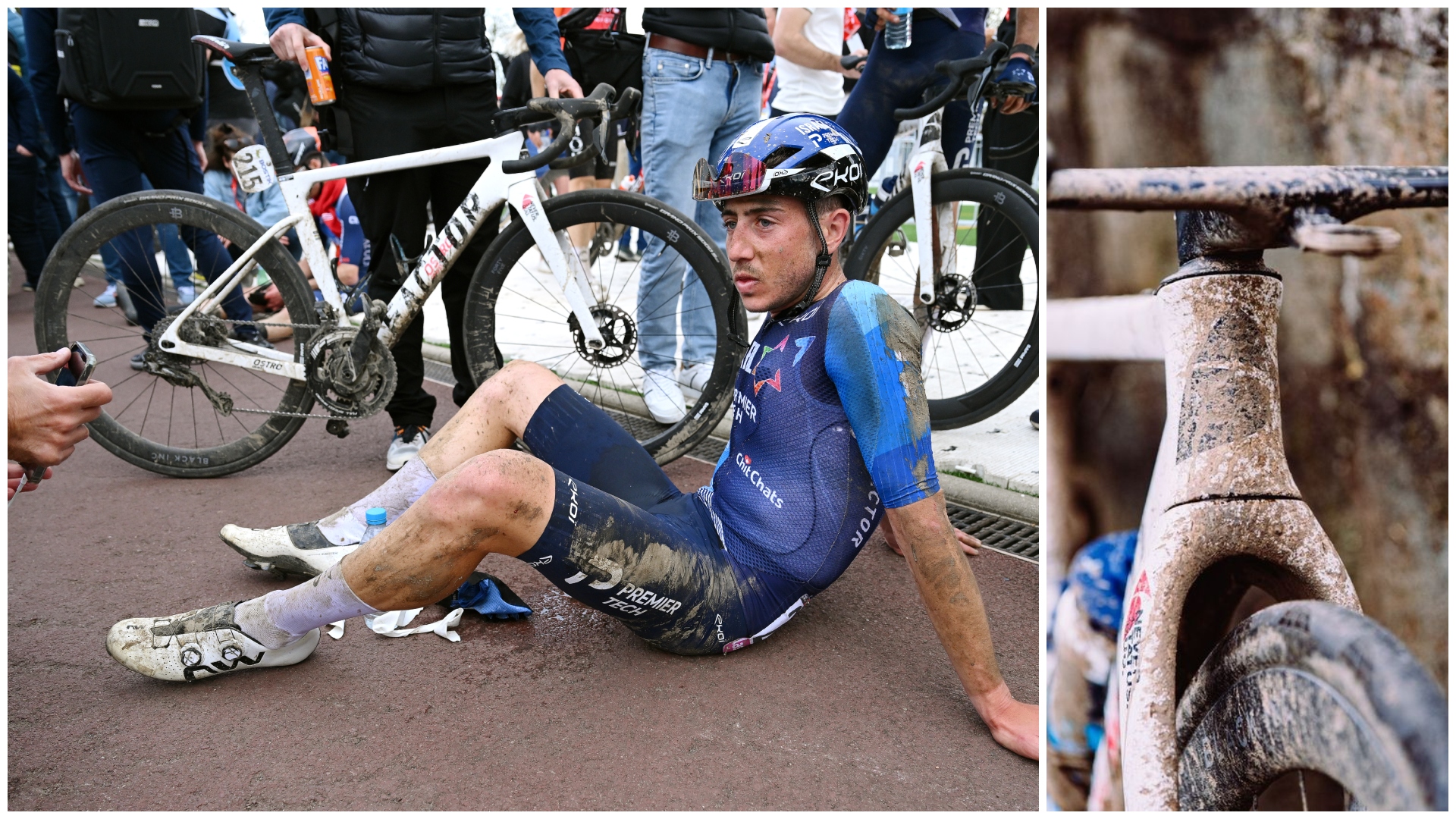
The 121st edition of the men's Paris-Roubaix was ripped up by none other than Mathieu van der Poel on Sunday, as he made an audacious move, breaking away from the lead group with 60 kilometers still remaining. From the moment of his attack, the writing was on the wall, and his gap continued to balloon out to a winning margin of three minutes.
In the women's race, world champion Lotte Kopecky sprinted from a group of six favourites, giving way to a much more exciting finale.
However, not all of the credit goes to the rider in Paris-Roubaix. Technology plays a crucial role in the Hell of the North, and as such, innovation can truly shape the race.
Every year, teams strive to harness new developments and technologies to navigate the cobbled terrain. So, what were the standout tech trends of the 2024 Paris-Roubaix?
Gravel bikes aren't fit for the cobbles
In years gone by, Paris-Roubaix presented a whole host of different, innovative bike setups. Team Sky's Pinarello Dogma K8 back in 2015, and the Specialized Roubaix are both examples where riders have used specific frame technology to help combat the savage stones. We believed those days to be gone, with bikes such as the Merida Reacto aero bike - ridden to victory by Sonny Colbrelli in 2021 - able to tackle the terrain.
However, some squads are still looking to tech outside of the road racing norm for gains. Case in point: Team Israel Premier Tech opted for the Factor Ostro Gravel instead of the traditional Factor Ostro Vam road race bike. According to reports, the team equipped their bikes with relatively wide 34c Continental GP5000 S TR tyres.
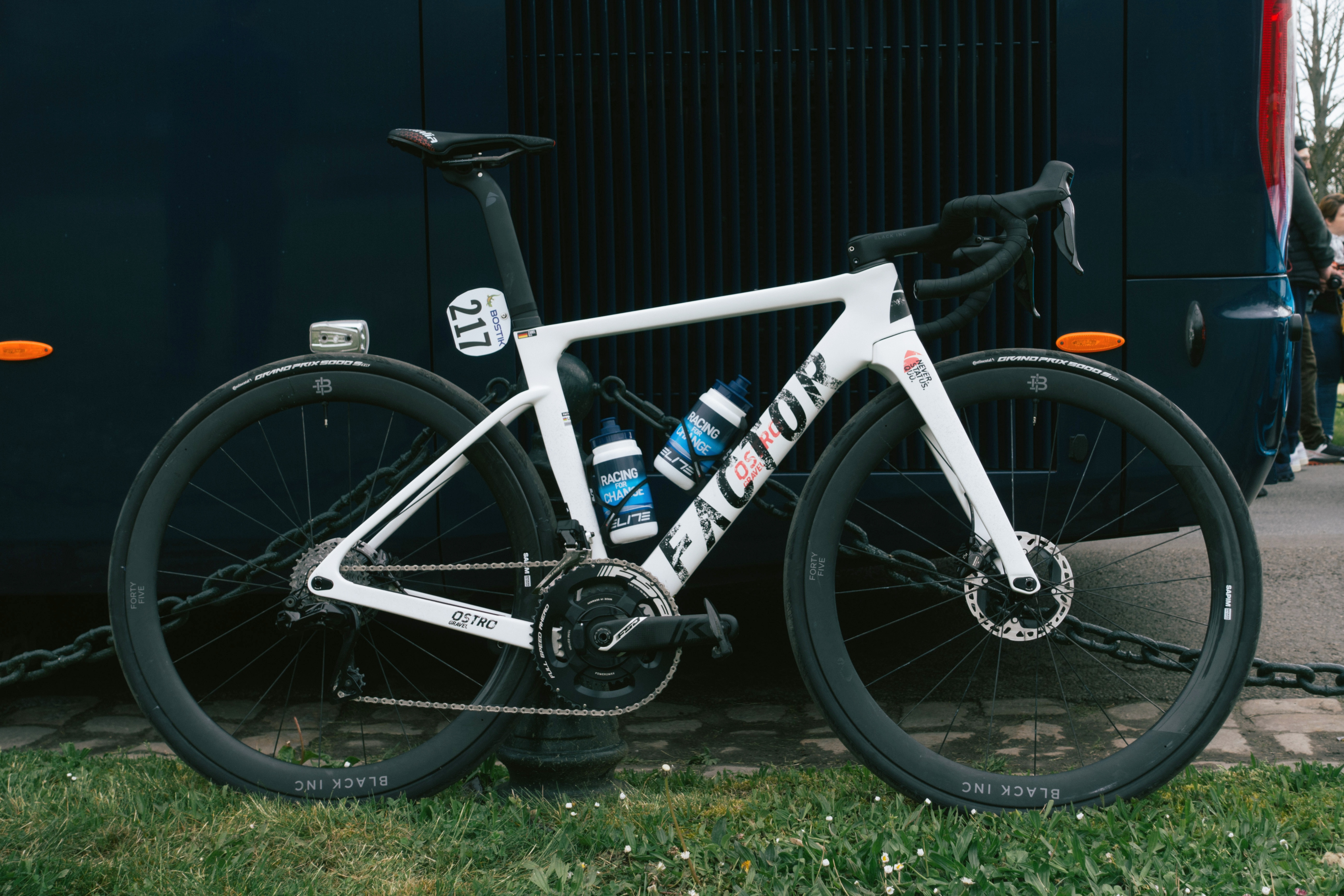
The rational here was to try to capitalise on the Ostro Gravel's wider tyre clearance, and slightly slacker geometry, which should in theory at least handle better over the tougher sectors, providing an advantage. However, their highest-placed rider finished over 7 minutes behind the winner, landing in 31st place.
There are likely a few things at play here, not least the geometry. Pro riders spend countless hours in a very precise position on the bike, it's difficult to replicate that when switching to a new frame, which could lead to a rather alien feel. Arguably, had the weather been much worse, the decision might have played in the gravel bike's favour, with more room for mud clearance - but as many teams showed, in 2024 you can build a perfectly capable setup using a standard road bike.
Dinner plate chainrings... obviously
No tech roundup would be complete without a good old game of spot the biggest chainring - perhaps what's more surprising though, is that the prize goes to one of the youngest riders in the field.
Josh Tarling of Ineos Grenadiers used a huge, 62t chainring on Sunday to tackle the flat parcours of Paris-Roubaix. His bike featured a 1x set-up, which, in conjunction with the larger chainring, should have allowed him to spend more time in the middle of the cassette, thus increasing chain efficiency thanks to a straighter chain line.
Other teams also went for larger chainrings than usual. A UAE Team Emirates mechanic revealed that some of their riders were using "a big, 55t chainring", while EF-Education EasyPost's Alberto Bettiol went for a 56t, as opposed to his usual 54t.
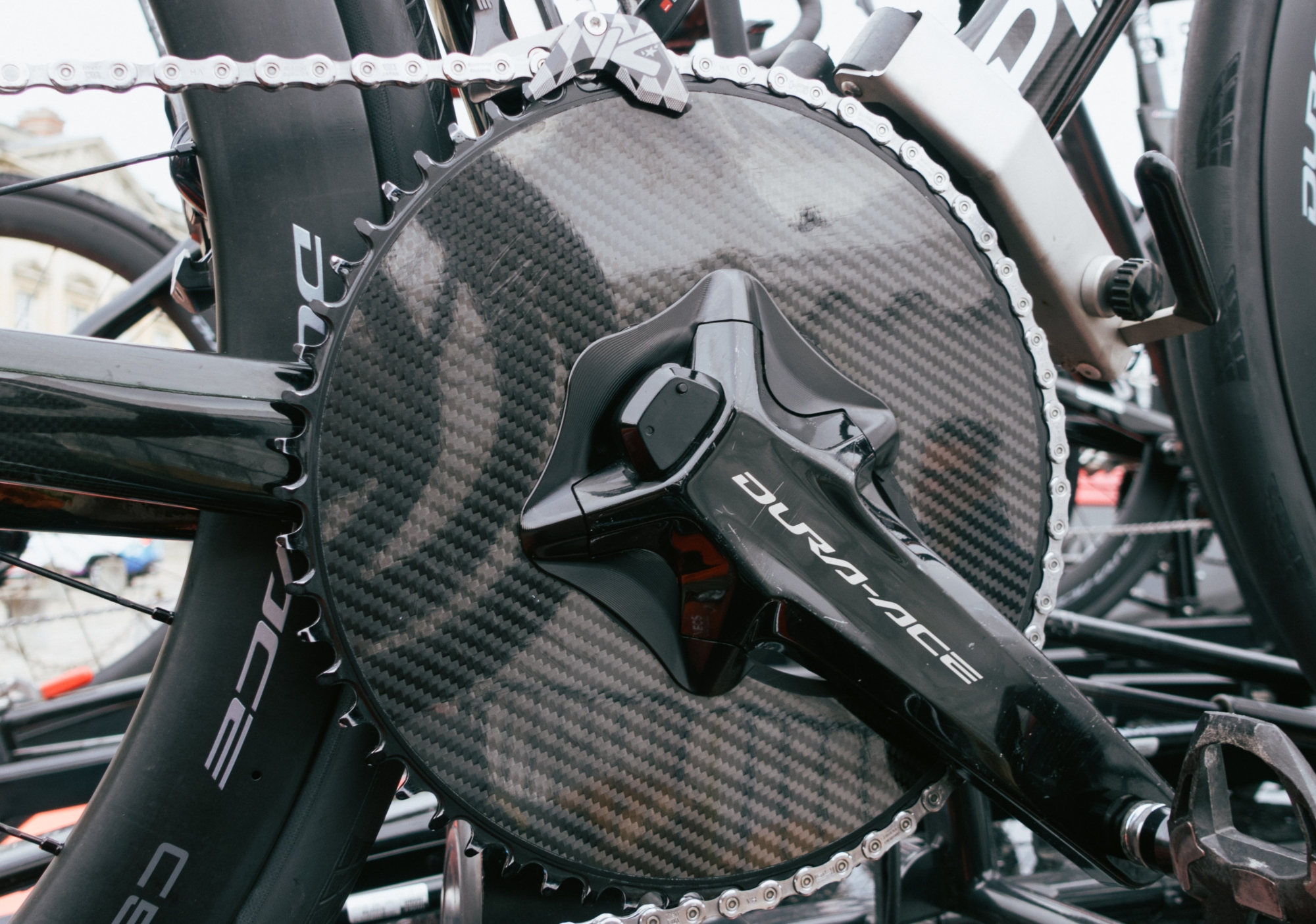
To stop the chain from falling off this carbon dinner plate, Ineos mechanics installed a K-edge chain catcher to Tarling's bike. In the end, though, the Welshman's day ended in a disgruntled disqualification, after race commissaries decided he had held on to a bottle at his team car for too long.
Aero bikes rule the roost
The trend dominating the paddock was, undeniably, a preference for outright aero bikes. In fact, Uno-X rider Alexander Kristoff made waves by choosing a prototype aero bike from team sponsor Dare. Rumored to be dubbed the Velocity Ace, this bike appears to be incredibly aggressive, featuring a remarkably deep head tube that takes full advantage of the latest UCI regulation changes.
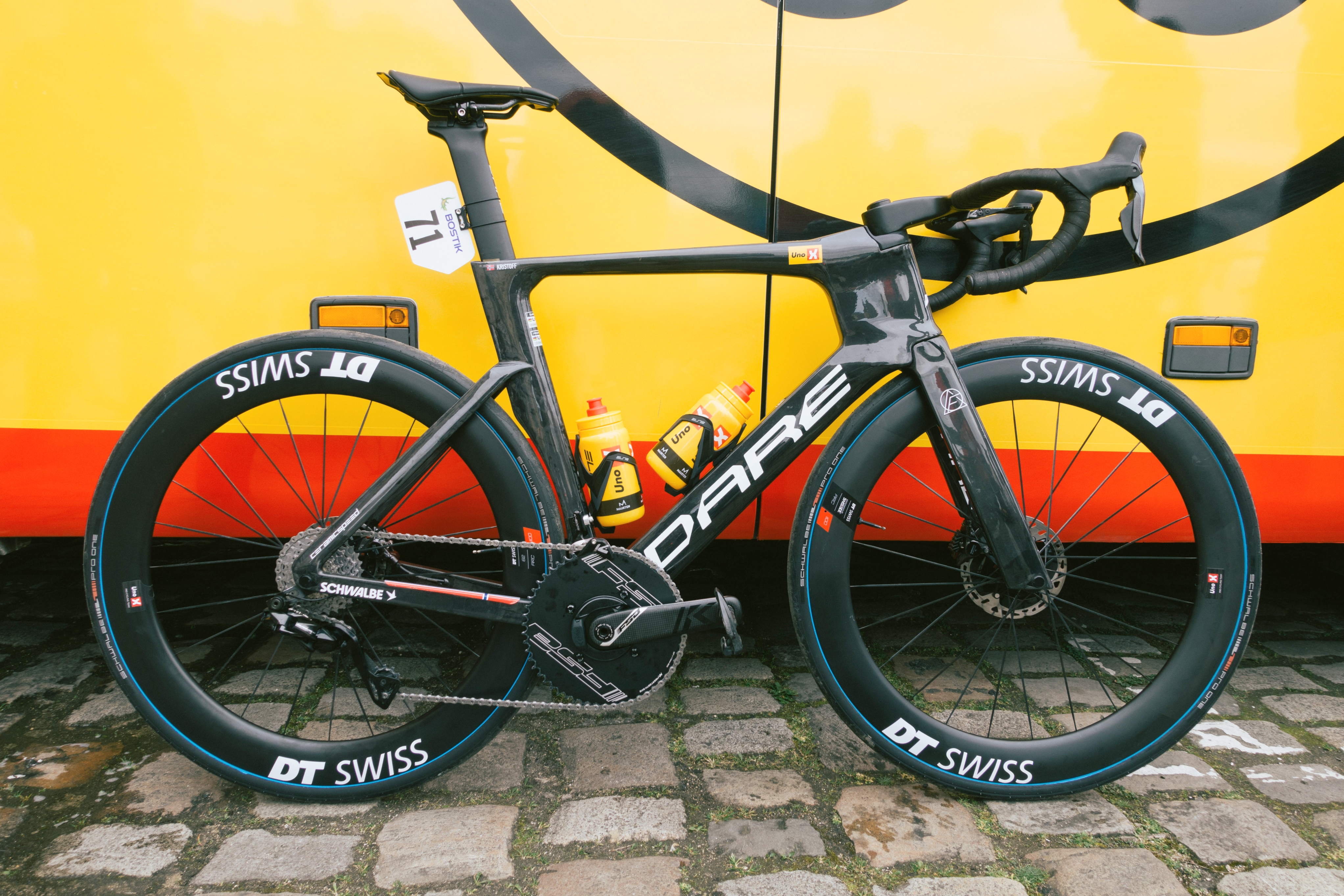
This preference for aero bikes was echoed throughout the men's peloton, where riders leaned towards them whenever possible. However, the women's peloton presented a slightly different picture, with a wider array of bike choices. Some opted for the endurance focused Trek Domane over the aero Madone, while others favored the all-rounder Canyon Ultimate over the wind cheating Aeroad.
It's evident that the current wave of endurance bikes, including the Specialized Roubaix, no longer holds sway in the realm of the cobbled classics. Perhaps the frame has become too compliant, or maybe aero bikes have evolved to the point where they can excel even on the most challenging parcours. Our perspective suggests it's likely a combination of both factors.
32mm tyres
While purists may argue that 32mm rubber should only be ridden in gran fondos, we think it's reasonable to speculate that the bikes landing on the podium owe their success to a simple factor: their compatibility with wider tyres.
Perhaps this is the single most influential aspect shaping the versatility of modern road bikes. Notably, the preferred tyre size within the peloton was 32c, with only a few teams deviating from this norm.
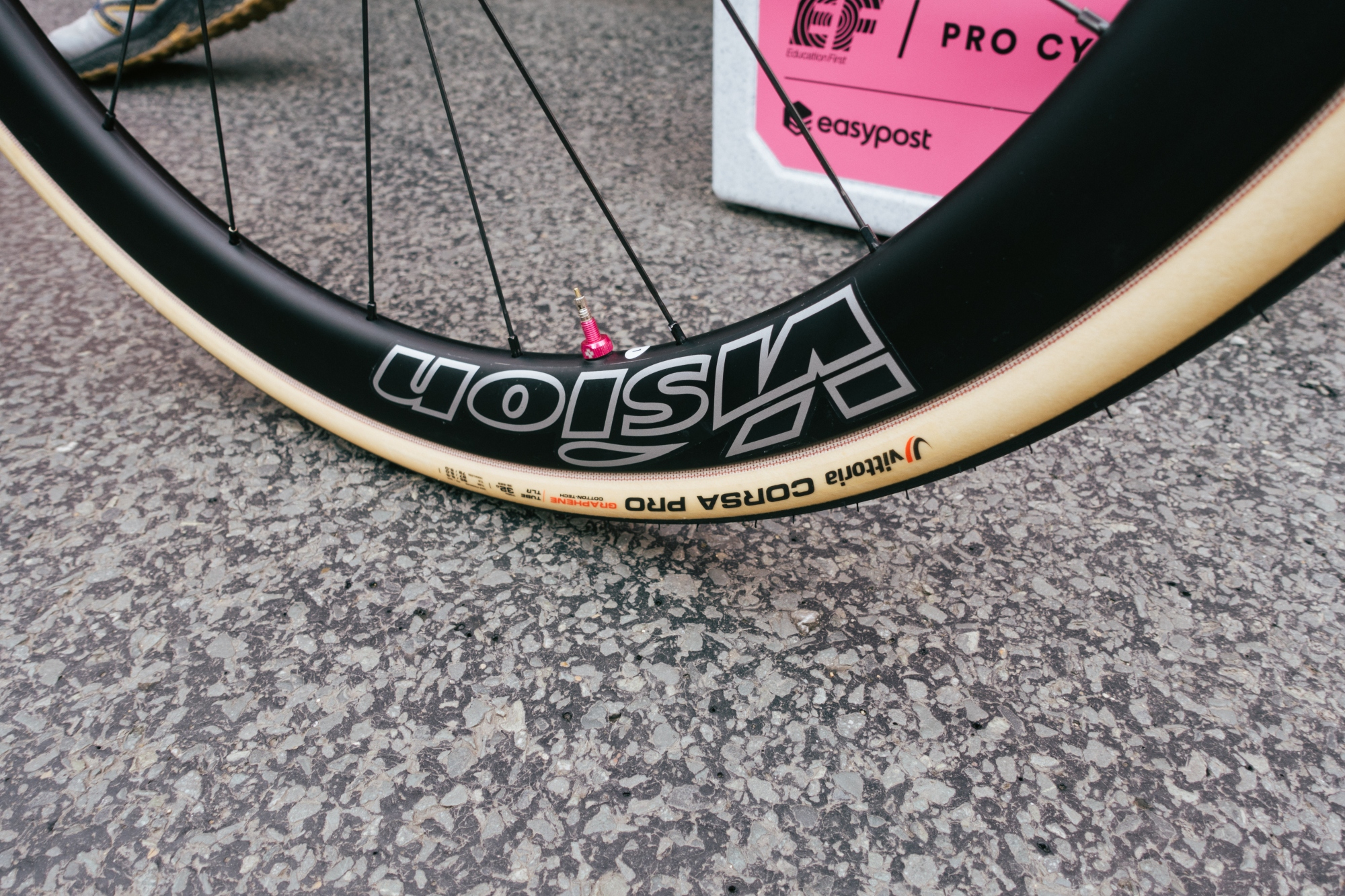
Some riders, including British champ Fred Wright opted for wider rubber still, cramming 35mm Continental GP5000 AS TR tyres into his Merida Reacto. "Apart from that, it's pretty standard Roubaix stuff," his Bahrain Victorious mechanic told Cycling Weekly.
Lidl-Trek also stood out, running the new prototype Pirelli tyres.
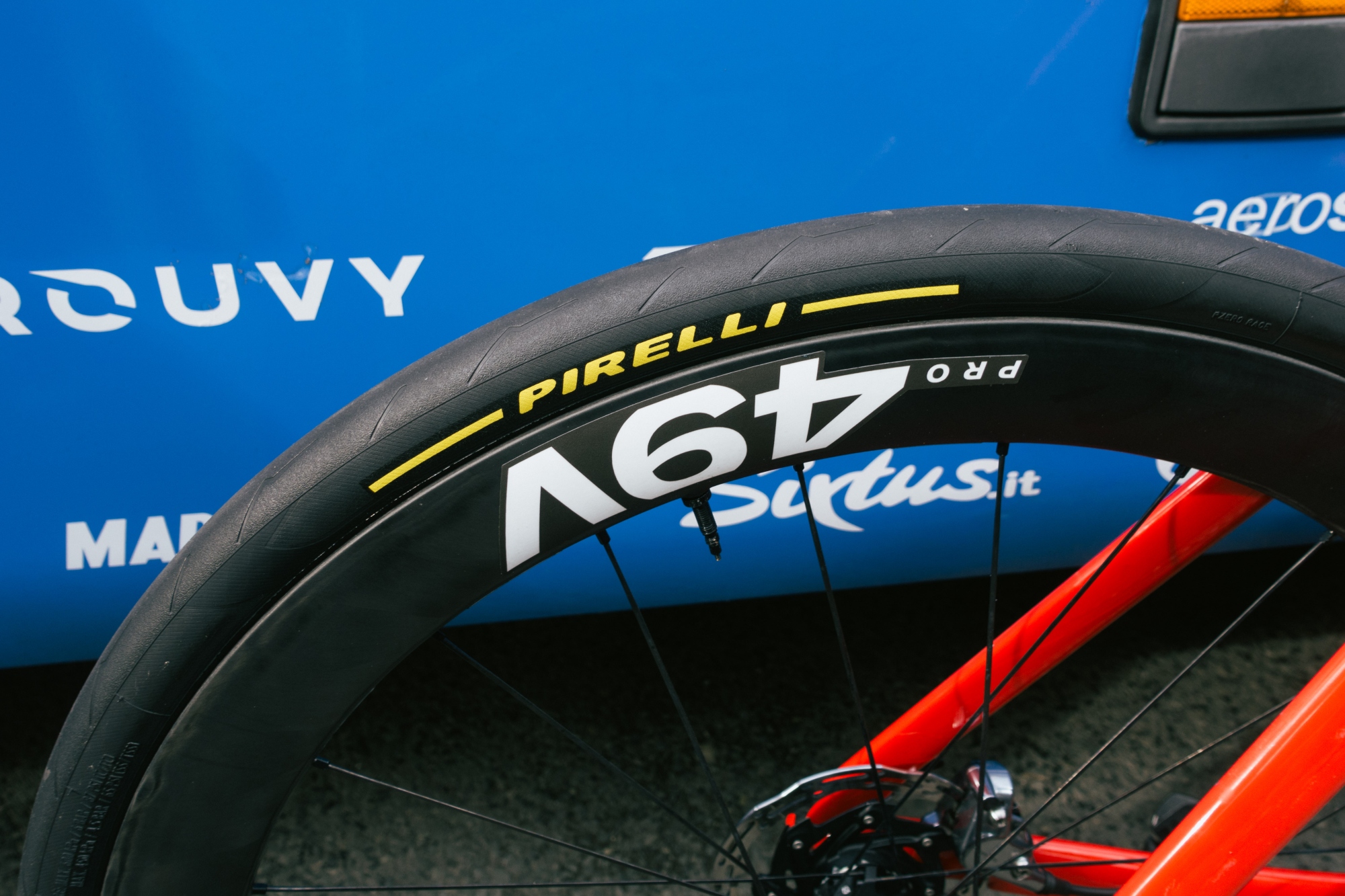
Despite being labeled as 32mm wide, when paired with the new Bontrager Aeolus Pro 49V gravel wheels, they measured up at 34.5mm. This generous tire volume likely allowed Mads Pederson to run lower pressure and maintain a substantial contact patch on the cobbles.
Good technique wins races - and saves your hands
Take a look around the starting area for Paris-Roubaix, and you'll find a whole host of hand-saving measures put in place by riders and team staff to try and save the skin on the palms of the riders.
This year, some teams, like UAE Team Emirates and EF-Education Cannondale, used Prologo's new bar tape, equipped with special tendrils for better grip. Double-wrapped handlebar tape, thicker gloves, and even taped wrists were all also among the hacks used on race day, but some riders choose to keep it simple.
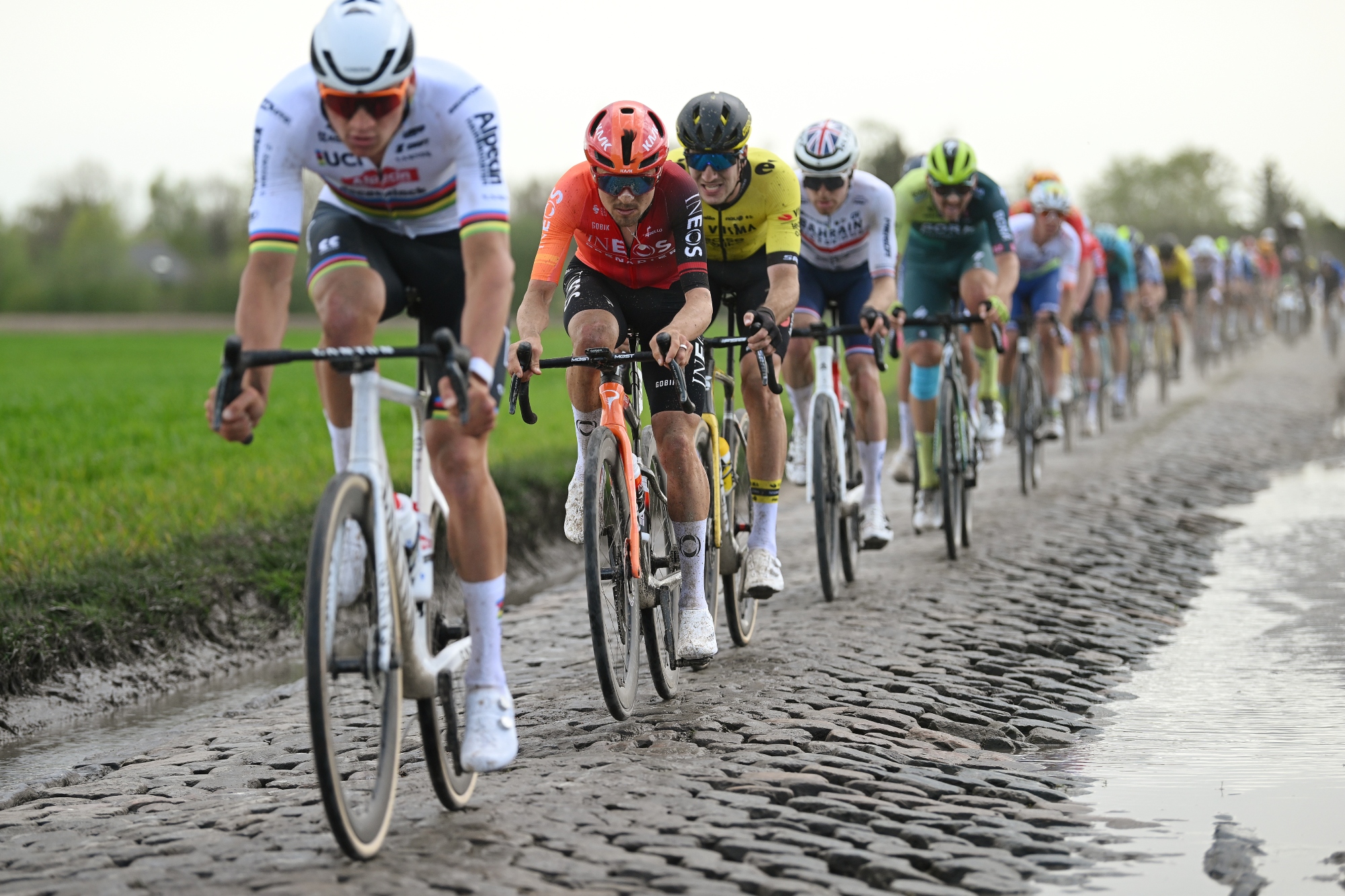
Both Mathieu van der Poel and Tom Pidcock bravely attacked Sunday's race with no gloves, showing everyone that technique, above all else, is the primary factor. The cyclocross pairing proved that you can hack around the cobbles for five hours and barely suffer a blemish to your palms.
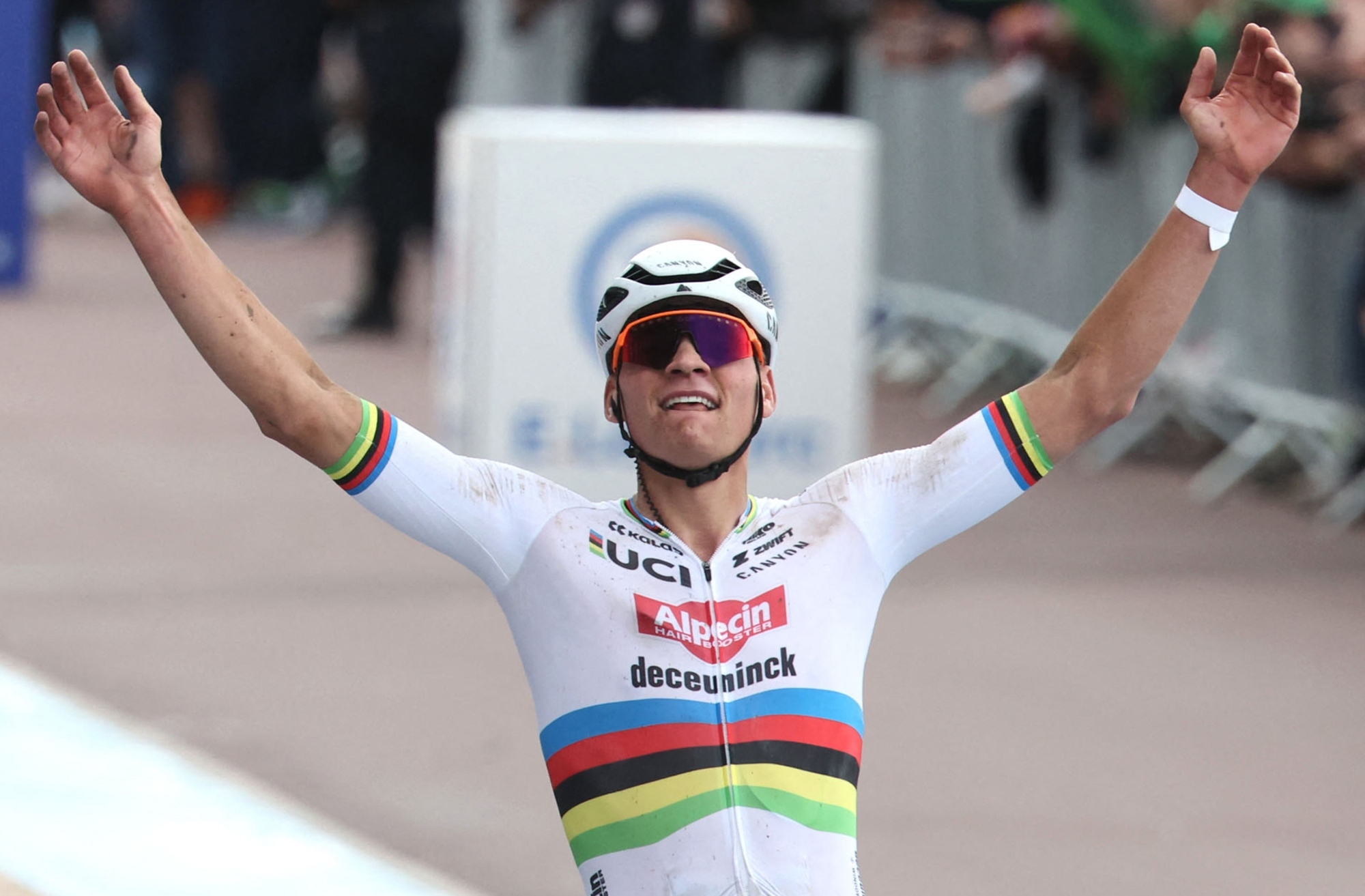
There really is a knack to riding cobbles. Where your position, weight, cadence choice, and pedal smoothness all change how the bike reacts underneath you - clearly something that these two cyclocross world champions have got down to a T.







